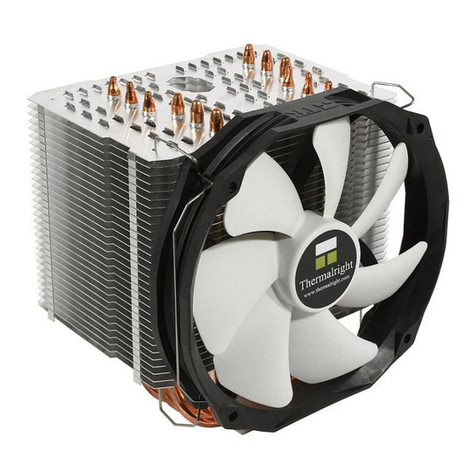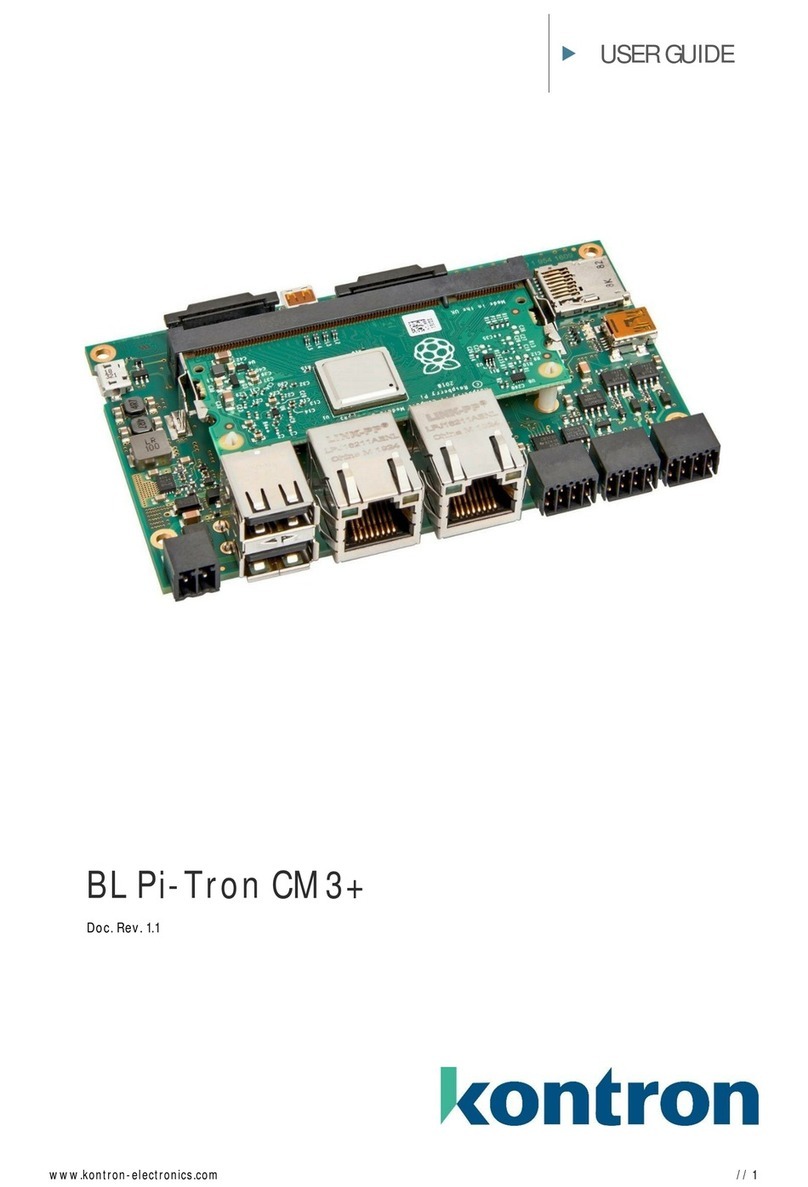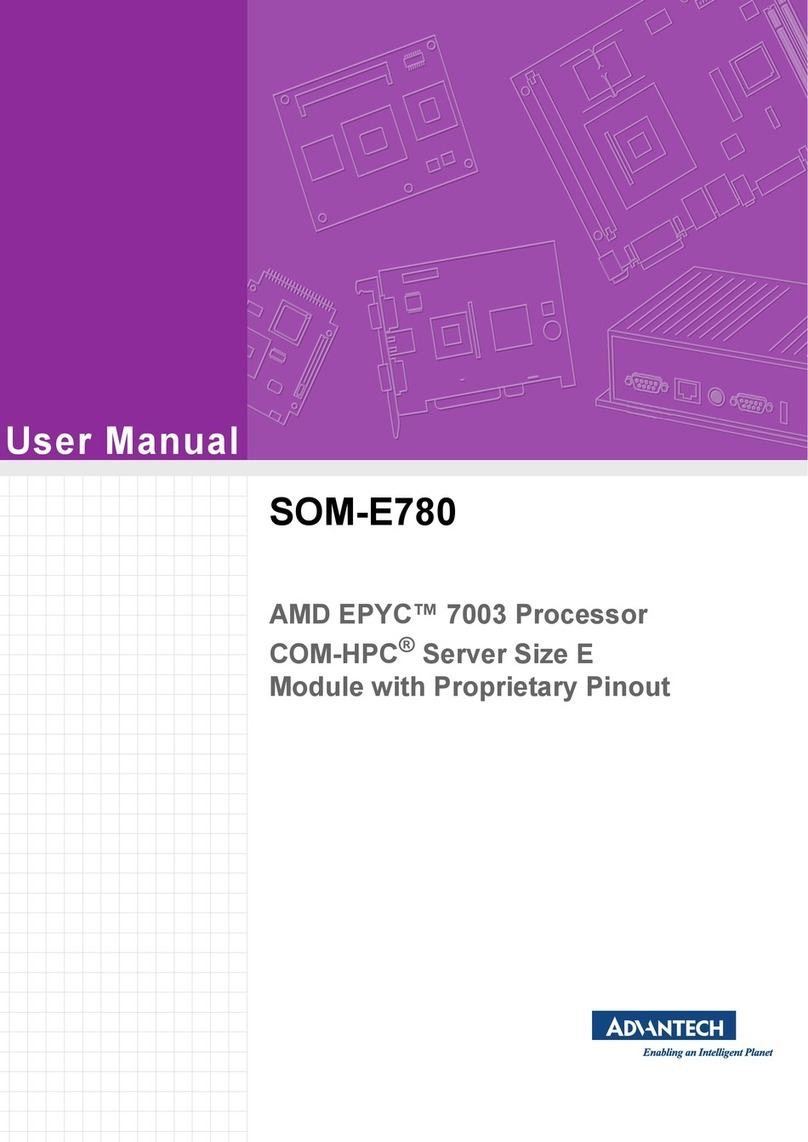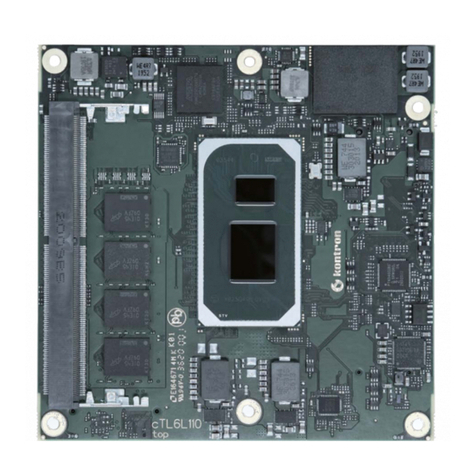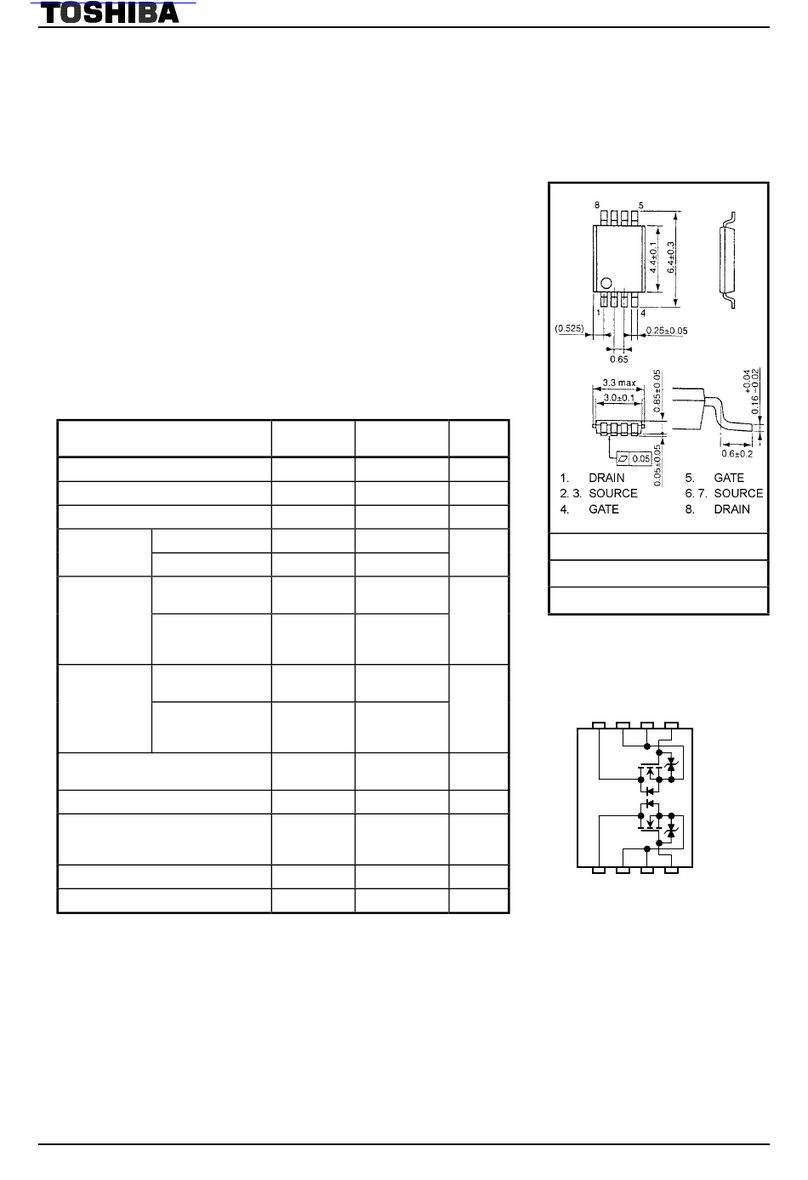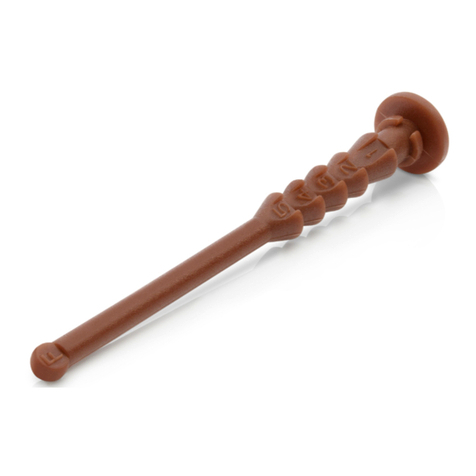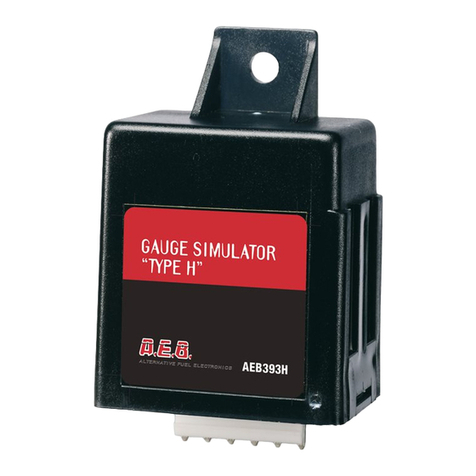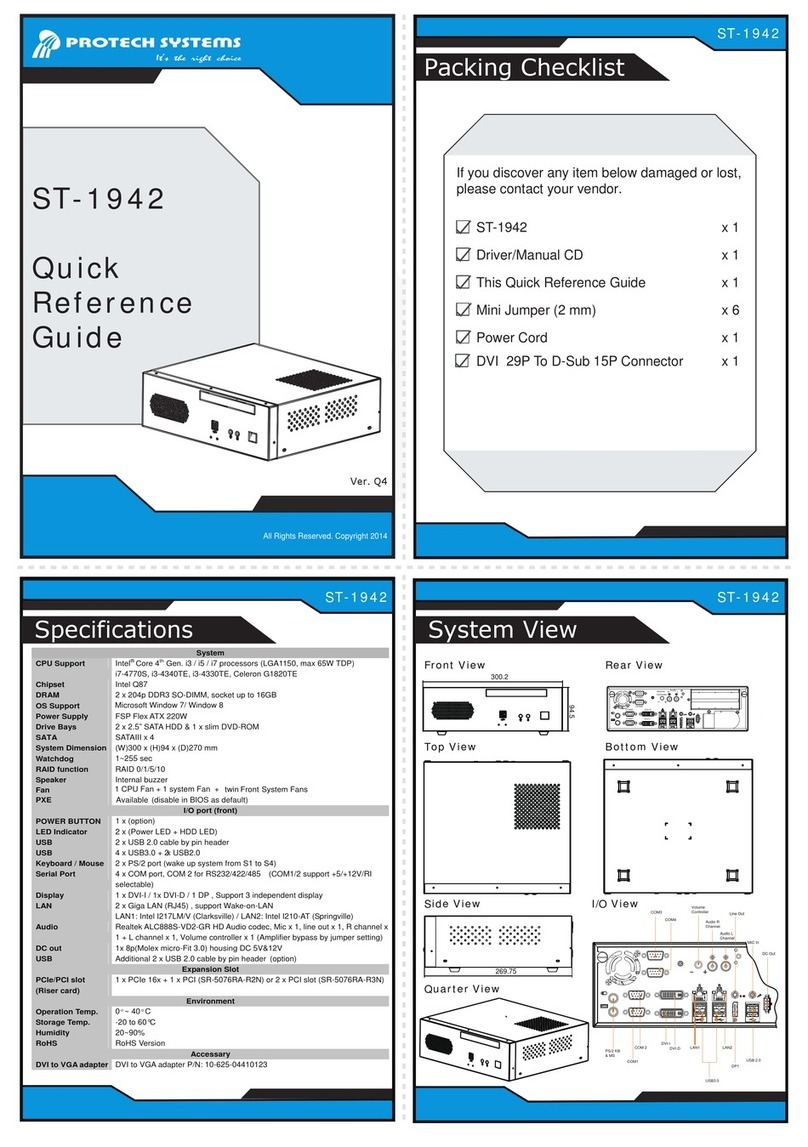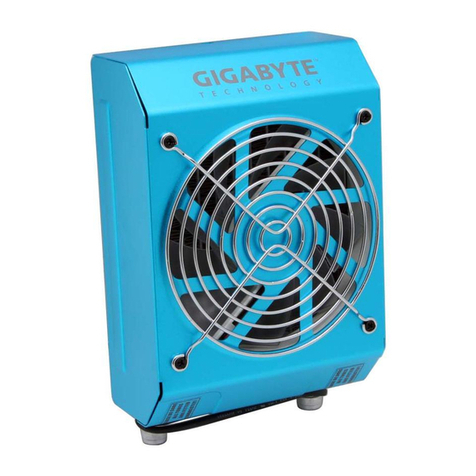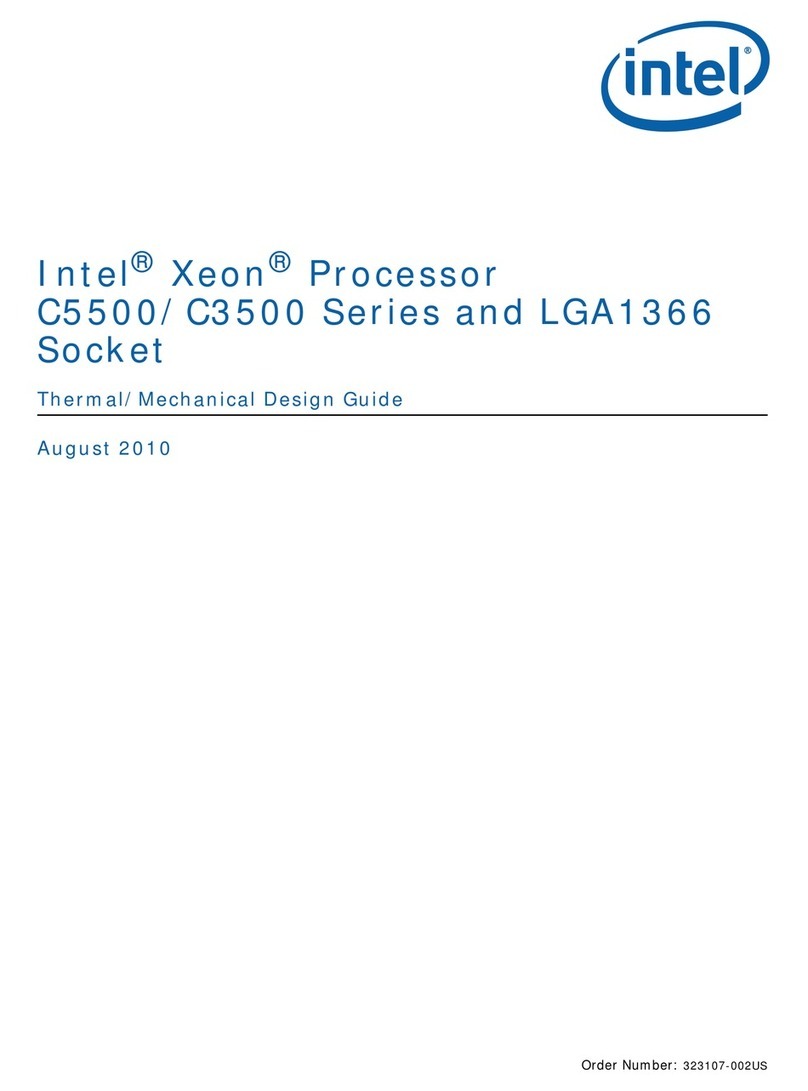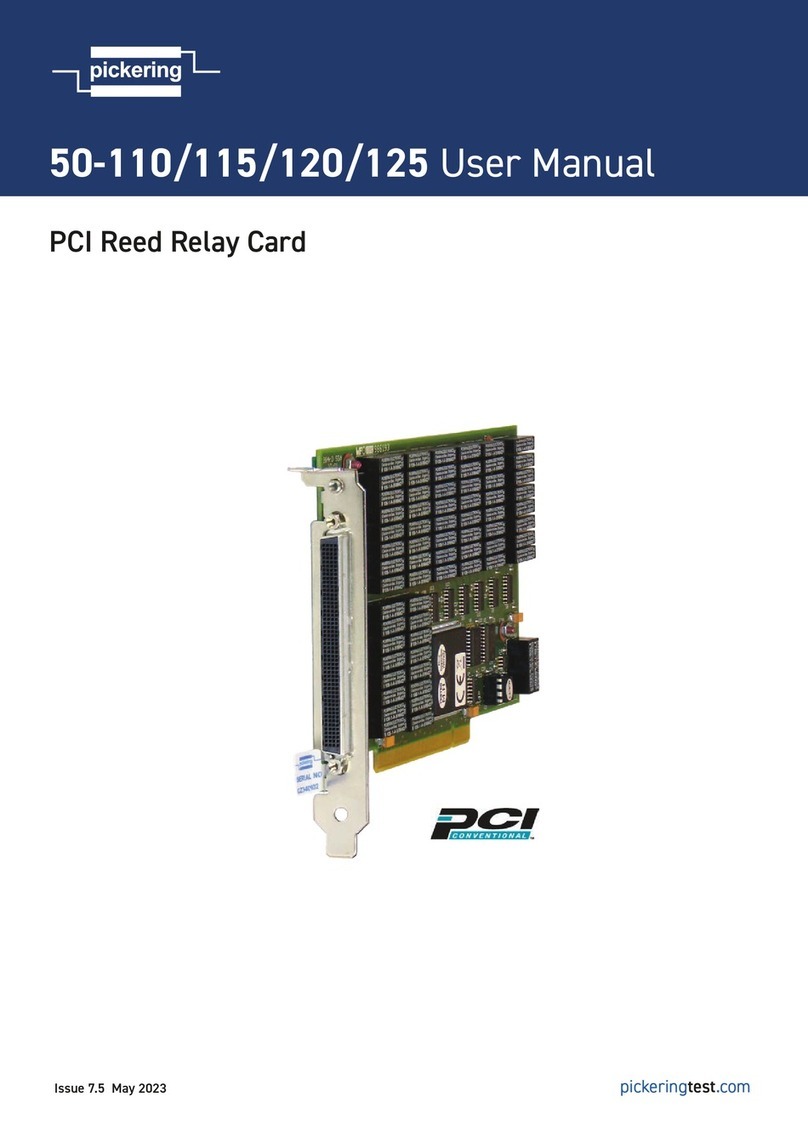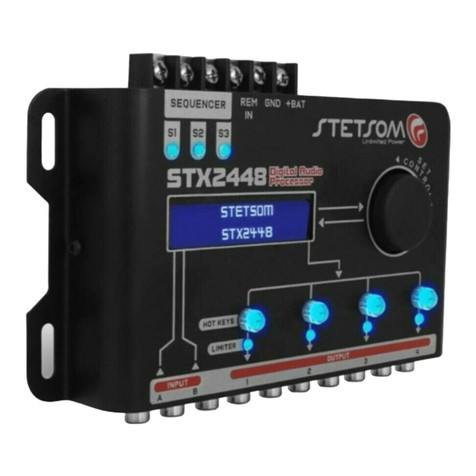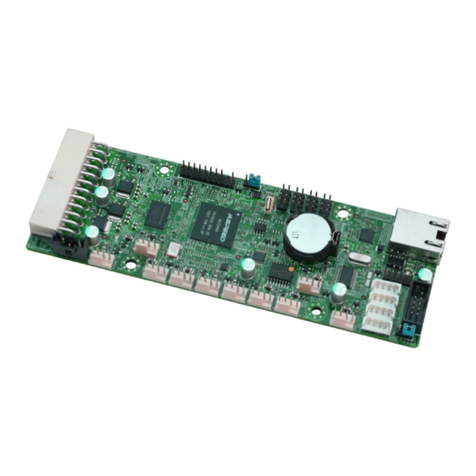Rohm BU1570KN Specification sheet

1/8
www.rohm.com 2009.04- Rev.B
© 2009 ROHM Co., Ltd. All rights reserved.
AIE Adaptive Image Enhancer Series
AIE:
Adaptive Image Enhancer
(Image processing technology based on ROHM hardware)
BU1570KN, BU1571KN
●Description
BU1570KN/BU1571KN is AIE : Adaptive Image Enhancer (image processing technology by ROHM’s hardware).
Provides unprecedented visibility under severe conditions, such as darkness or extreme backlighting.
●Features
1) UXGA size (16001200) for input of image data up to 7.5 fps, SXGA size (12801024) for input of image data up to
15 fps and VGA size (640480) for input of image data up to 30 fps.
2) Input data format for YUV=4:2:2 8bit. Order of components may be adjusted by the register.
3) Operation modes are image enhance mode, through mode, and sleep mode.
4) Strength of image correction can be set to linear.
5) Able to read out brightness for the entire area for motion detection *1
6) Register can be set up with a 2-line serial interface.
*Extra document is prepared separately about each register setup. Please refer to the Development Scheme on page 6.
*1 : BU1570KN Only
●Application
Security camera, Intercom with camera, Drive recorder, and Web camera etc.
●Lineup
Parameter Supply power
source voltage
Camera
Interface
Control
Interface
Output
Interface
Interrupt
output Package
BU1570KN 1.45-1.55(VDDCore)
2.7-3.6(VDDIo)
Supported up to
Max 2M pixels.
(1600×1200)
I2C BUS
8bit
YUV=4:2:2
Camera interface
motion
detection
Interrupt
output
VQFN36
BU1571KN 1.45-1.55(VDDCore)
2.7-3.6(VDDIo)
Supported up to
Max 2M pixels.
(1600×1200)
I2C BUS
8bit
YUV=4:2:2
Camera interface
- VQFN36
●Absolute maximum ratings (Ta=25℃) ●Recommended operating range
*In the case exceeding 25ºC, 4.5mW should be reduced
at the rating 1ºC.
Parameter Symbol Rating Unit Parameter Symbol Rating Unit
Supply power
source voltage 1 VDDIO -0.3~+4.2 V Supply power source
voltage 1(IO)VDDIO 2.70~3.60(Typ:3.3V) V
Supply power
source voltage 2 VDD -0.3~+2.1 V Supply power source
voltage 2(CORE)VDD 1.45~1.55(Typ:1.50V) V
Input voltage VIN -0.3~VDDIO+0.3 V Input voltage range VIN-VDDIO 0~VDDIO V
Storage
temperature range Ts tg -40 ~+125 ℃Operating
temperature range Topr -40~+85 ℃
Power dissipation PD 450 mW *Please supply power source in order of VDD→VDDIO.
No.09060EBT01

BU1570KN, BU1571KN
Technical Note
2/8
www.rohm.com 2009.04- Rev.B
© 2009 ROHM Co., Ltd. All rights reserved.
●Electric characteristics
(Unless otherwise specified, VDD=1.50V,VDDIO=3.3V,GND=0.0V,Ta=25℃,fIN=52.0MHz)
Parameter Symbol Limits Unit Condition
MIN. TYP. MAX.
Input frequency fIN 10.0 - 52.0 MHz CAMCKI(DUTY45%~55%)
Operating consumption current IDD1 - 15 - mA At enhance mode setting
Static consumption current IDDst - - 30 μA At sleep mode setting, input terminal=GND setting
Input ”H” current 1 IIH1 -10 - 10 μA VIH=VDDIO
Input ”H” current 2 IIH2 35 70 140 μA Pull-Down terminal, VIH=VDDIO
Input ”L” current 1 IIL1 -10 - 10 μA VIL=GND
Input ”L” current 2 IIL2 -10 - 10 μA Pull-Down terminal, VIL=GND
Input ”H” voltage 1 VIH1 VDDIO
0.8 - VDDIO
+0.3 V Normal input (including input mode of I/O terminal)
Input ”L” voltage 1 VIL1 -0.3 - VDDIO
0.2 V Normal input (including input mode of I/O terminal)
Input ”H” voltage 2 VIH2 VDDIO
0.85 - VDDIO
+0.3 V Hysteresis input (RESETB, CAMCKI, SDA, SDC)
Input ”L” voltage 2 VIL2 -0.3 - VDDIO
0.15 V Hysteresis input (RESETB, CAMCKI, SDA, SDC)
Hysteresis voltage width Vhys - 0.5 - V Hysteresis input (RESETB, CAMCKI, SDA, SDC)
Output ”H” voltage VOH VDDIO
-0.4 - VDDIO V IOH=-1.0mA(DC)
(including input mode of I/O terminal)
Output ”L” voltage VOL 0.0 - 0.4 V IOL=1.0mA(DC)
(including input mode of I/O terminal)
●Block Diagram ●Recommended Application Circuit
*1,2,3 : BU1570KN Only
*Extra document is prepared separately about system evaluation. Please refer to the Development Scheme on page 6.
8
CAMDI[7:0]
YUV=4:2:2
SD
A
8 CAMDO[7:0]
YUV=4:2:2
SDC
CAMHSI
CAMVSI
CAMCKI
CAMHSO
CAMVSO
CAMCKO
INT*3
Motion
Detector
*1
Interrupt
Controller
*2
SDC
CAMHSI
CAMVSI
CAMCKI
Image
Processing
CAMDI[7:0]
SDA
Camera
Module
BU1570KN
BU1571KN
CAMDO[7:0]
CAMHSO
CAMVSO
CAMCKO
INT*4
CAMDO[7:0]
CAMHSO
CAMVSO
CAMCKO
CAMDI[7:0]
CAMHSI
CAMVSI
CAMCKI
IC
Timing
Generator
Serial
Interface
Luminance
Distinction Image
Enhance
Color
Correction
HOST
CPU
SDA SDC
*4 : BU1570KN Only

BU1570KN, BU1571KN
Technical Note
3/8
www.rohm.com 2009.04- Rev.B
© 2009 ROHM Co., Ltd. All rights reserved.
●Terminal functions
PIN No. PIN Name In/Out Active Level Init Function explanation I/O type
1 CAMVSI In *-
Vertical Timing Input (pull-down at sleep mode)B*1
2 N.C.
3 CAMHSI In *-
Horizontal Timing Input (pull-down at sleep mode)B*1
4 CAMDI0 In DATA - Data Input Bit 0 (pull-down at sleep mode)B*1
5 CAMDI1 In DATA - Data Input Bit 1 (pull-down at sleep mode)B*1
6 CAMDI2 In DATA - Data Input Bit 2 (pull-down at sleep mode)B*1
7 CAMDI3 In DATA - Data Input Bit 3 (pull-down at sleep mode)B*1
8 CAMDI4 In DATA - Data Input Bit 4 (pull-down at sleep mode)B*1
9 CAMDI5 In DATA - Data Input Bit 5 (pull-down at sleep mode)B*1
10 CAMDI6 In DATA - Data Input Bit 6 (pull-down at sleep mode)B*1
11 CAMDI7 In DATA - Data Input Bit 7 (pull-down at sleep mode)B*1
12 VDDIO - PWR - DIGITAL IO Power Source -
13 CAMCKI In CLK - Clock Input (pull-down at sleep mode)D*1
14 GND - GND - Common GROUND -
15 VDD - PWR - CORE Power Source -
16 SDA In/Out DATA In In/Output Serial Data E
17 SDC In/Out CLK In In/Output Serial Clock E
18 INT*2 Out *-
Luminance Changing Interrupt Signal -
19 CAMVSO Out - - Vertical Timing Signal Output C
20 N.C.
21 CAMHSO Out - - Horizontal Timing Signal Output C
22 CAMDO0 Out DATA - Data Output: Bit 0 C
23 CAMDO1 Out DATA - Data Output: Bit 1 C
24 CAMDO2 Out DATA - Data Output: Bit 2 C
25 CAMDO3 Out DATA - Data Output: Bit 3 C
26 CAMDO4 Out DATA - Data Output: Bit 4 C
27 CAMDO5 Out DATA - Data Output: Bit 5 C
28 CAMDO6 Out DATA - Data Output: Bit 6 C
29 CAMDO7 Out DATA - Data Output: Bit 7 C
30 TEST1 In Low - Test Mode Terminal 1 (Connect to GND) B
31 TEST2 In Low - Test Mode Terminal 2 (Connect to GND) B
32 RESETB In Low - System Reset Signal A
33 VDDIO - PWR - DIGITAL IO Power Source -
34 CAMCKO Out CLK - Clock Output C
35 GND - GND - Common GROUND -
36 VDD - PWR - CORE Power Source -
*”*” in the Active Level column indicates that it may be changed during set-up of the register. Init indicates pin status when
released from reset.
*1: Pull-down is ON during reset (initial status).
*2 : In the case of BU1571KN, PIN NAME=TESTOUT.

BU1570KN, BU1571KN
Technical Note
4/8
www.rohm.com 2009.04- Rev.B
© 2009 ROHM Co., Ltd. All rights reserved.
●Equivalent Circuit Structures of input / output pins
Type The equivalent circuit structure Type The equivalent circuit structure
A
Input terminal with Schmitt
B
Input terminal with PULL-DOWN
C
Output terminal
D
Hysteresis input terminal with PULL-DOWN
E
Hysteresis input / output terminal
●Terminal Layout
(Bottom View)
CAMDO5
CAMDO4
CAMDO3
CAMDO2
CAMDO1
CAMHSO
CAMVSO
CAMDO0
RESETB
CAMDO7
CAMVSI
N.C.
CAMHSI
CAMDI0
CAMDI1
CAMDI2
CA MDI3
CAMDI4
CAMDI5
N.C.
CAMDI6
CAMDI7
VDDIO
CAMCKI
GND
VDD
SDA
SDC
INT*1
VDD
GND
CAMCKO
VDDIO
TEST2
TEST1
CAMDO6
VDDIO
GND
To internal
VDDIO
GND GND
Internal signal
VDDIO
Internal signal
GND
To
internal
VDDIO
GND
GND
VDDIO
VDDIO
Internal signal
Internal signal
Internal signal
VDDIO
GND
To internal
GND
Internal signal
VDDIO
GND
VDDIO
GND
To internal
GND
*1 : In the case of BU1571KN, PIN NAME=TESTOUT.

BU1570KN, BU1571KN
Technical Note
5/8
www.rohm.com 2009.04- Rev.B
© 2009 ROHM Co., Ltd. All rights reserved.
●Timing Chart
1. Two-line serial interface
1.1 Two-line serial interface timing
Table 1.1-1 I2C Interface timing
2.
Camera module interface
2.1. Camera module interface timing
The input timing of camera image signal on camera I/F is shown in Table 2.1-1.
The input timing of camera image signal on camera I/F is shown in Table 2.1-2.
Symbol Explanation MIN TYP MAX. UNIT
tPCLK Clock Cycle 19. - - ns
dPCLK Clock Duty 45 50 55 %
tPDV Decision of CAMDO from CAMCKO - - 5 ns
tPHL, tPHH Decision of CAMVSO or CAMHSO from CAMCKO - - 5 ns
Symbol Parameter MIN. TYP. MAX. Unit
fSCL SDC Clock Frequency 0 - 400 kHz
tHD;STA Hold-time(repetition)『START』conditions
(The first clock pulse is generated after this period.) 0.6 - - us
fLOW The "L" period of SDC clock 1.3 - - us
tHIGH The "H" period of SDC clock 0.6 - - us
tSU;STA Setup time of repetitive 『START』conditions 0.6 - - us
tHD;DAT Hold time of SDA 0 - us
tSU;DAT Setup time of SDA 100 - - ns
tSU;STO Setup time of the 『STOP』conditions 0.6 - - us
tBUF
BUS free time between 『STOP』conditions and the 『START』
conditions
1.3 - - us
Symbo Explanation MIN TYP MAX. UNIT
tCMS CAMCKI Rise / Fall Camera set-up Time 4 - - ns
tCMH CAMCKI Rise / Fall Camera Hold Time 4 - - ns
tLOW
SD
A
SDC
tHD;STA
tHD;DA
T
tHIGH
tSU;DAT
tSU;ST
A
tHD;S
T
tSU;STO
tBUF
Table 2.1-1 BU1570KN/BU1571KN timing (Camera data input)
Table 2.1-2 Camera data output timing
CAMVSI
CAMHSI
CAMDI0
-CAMDI7
CAMCKI
(CKPOL=“1”)
CAMCKI
(CKPOL=“0”)
tCMS tCMH
CAMVSO
CAMDO[7:0]
CAMHSO
CAMCKO
tPCLK
tPHH
tPHL
tPDV

BU1570KN, BU1571KN
Technical Note
6/8
www.rohm.com 2009.04- Rev.B
© 2009 ROHM Co., Ltd. All rights reserved.
●Development Scheme
This technical note is aimed at trying the connectivity in the hardware between customer’s system and our AIE Adaptive
Image Enhancer series.
We prepare various data and tools for every development STEP as follows other than this technical note, please
contact the sales staff in your duty also including the support system.
(1) Demonstration STEP
(You can try the standard image processing functions by the standard Demonstration kit at once.)
You can confirm on TV screen what carried out AIE processing of a camera image and the DVD video image.
・Standard Demonstration board kit
◎Demonstration board(TV-IN→BU1570KN→TV-OUT board)
◎Demonstration board operation manual
◎Demonstration software
If the software for the trial board is installed in your Windows PC(Windows 2000/XP), more detailed setting is
possible.
◎USB cable
(2) Confirmation STEP
(We will respond to customer’s camera module.)
・Specifications
We will provide specifications for AIE Adaptive Image Enhancer according to customer’s requirements.
・Function explanation
We will deliver you the function explanation describing detailed functions, register settings, external
interfaces, timing, and so forth of AIE Adaptive Image Enhancer according to your requests.
・Application note
We will deliver you the detailed explanation data on application development of AIE Adaptive Image
Enhancer according to your requests.
(3) System check STEP
(You can check the application operation as a system by the kit of system check tools and your camera
module.)
You can check the interface with your camera module and the application operation on the system check board using
the tools for user’s only.
・System check tools kit
◎Board for system evaluation
◎Manual for system evaluation
◎Macro command file for reference
*You can check the detailed functions of the application operation by your PC using the macro command file.
(4) Integrated check STEP with user’s system
(You can check the application operation as a system on your system check board using the integrated
check software.)
You can check the application operation on the sample LSI-equipped system check board by your camera
module using the integrated check software.
・On line Support;We will answer your questions about the software development.

BU1570KN, BU1571KN
Technical Note
7/8
www.rohm.com 2009.04- Rev.B
© 2009 ROHM Co., Ltd. All rights reserved.
Cautions on use
(1)Absolute Maximum Ratings
An excess in the absolute maximum ratings, such as supply voltage, temperature range of operating conditions, etc., can break
down devices, thus making impossible to identify breaking mode such as a short circuit or an open circuit. If any special mode
exceeding the absolute maximum ratings is assumed, consideration should be given to take physical safety measures
including the use of fuses, etc.
(2)Operating conditions
These conditions represent a range within which characteristics can be provided approximately as expected. The electrical
characteristics are guaranteed under the conditions of each parameter.
(3)Reverse connection of power supply connector
The reverse connection of power supply connector can break down ICs. Take protective measures against the breakdown due
to the reverse connection, such as mounting an external diode between the power supply and the IC’s power supply terminal.
(4)Power supply line
Design PCB pattern to provide low impedance for the wiring between the power supply and the GND lines.
In this regard, for the digital block power supply and the analog block power supply, even though these power supplies has the
same level of potential, separate the power supply pattern for the digital block from that for the analog block, thus suppressing
the diffraction of digital noises to the analog block power supply resulting from impedance common to the wiring patterns. For
the GND line, give consideration to design the patterns in a similar manner.
Furthermore, for all power supply terminals to ICs, mount a capacitor between the power supply and the GND terminal. At the
same time, in order to use an electrolytic capacitor, thoroughly check to be sure the characteristics of the capacitor to be used
present no problem including the occurrence of capacity dropout at a low temperature, thus determining the constant.
(5)GND voltage
Make setting of the potential of the GND terminal so that it will be maintained at the minimum in any operating state.
Furthermore, check to be sure no terminals are at a potential lower than the GND voltage including an actual electric transient.
(6)Short circuit between terminals and erroneous mounting
In order to mount ICs on a set PCB, pay thorough attention to the direction and offset of the ICs. Erroneous mounting can break
down the ICs. Furthermore, if a short circuit occurs due to foreign matters entering between terminals or between the terminal
and the power supply or the GND terminal, the ICs can break down.
(7)Operation in strong electromagnetic field
Be noted that using ICs in the strong electromagnetic field can malfunction them.
(8)Inspection with set PCB
On the inspection with the set PCB, if a capacitor is connected to a low-impedance IC terminal, the IC can suffer stress.
Therefore, be sure to discharge from the set PCB by each process. Furthermore, in order to mount or dismount the set PCB
to/from the jig for the inspection process, be sure to turn OFF the power supply and then mount the set PCB to the jig. After the
completion of the inspection, be sure to turn OFF the power supply and then dismount it from the jig. In addition, for protection
against static electricity, establish a ground for the assembly process and pay thorough attention to the transportation and the
storage of the set PCB.
(9)Input terminals
In terms of the construction of IC, parasitic elements are inevitably formed in relation to potential. The operation of the parasitic
element can cause interference with circuit operation, thus resulting in a malfunction and then breakdown of the input terminal.
Therefore, pay thorough attention not to handle the input terminals, such as to apply to the input terminals a voltage lower than
the GND respectively, so that any parasitic element will operate. Furthermore, do not apply a voltage to the input terminals
when no power supply voltage is applied to the IC. In addition, even if the power supply voltage is applied, apply to the input
terminals a voltage lower than the power supply voltage or within the guaranteed value of electrical characteristics.
(10)Ground wiring pattern
If small-signal GND and large-current GND are provided, It will be recommended to separate the large-current GND pattern
from the small-signal GND pattern and establish a single ground at the reference point of the set PCB so that resistance to the
wiring pattern and voltage fluctuations due to a large current will cause no fluctuations in voltages of the small-signal GND. Pay
attention not to cause fluctuations in the GND wiring pattern of external parts as well.
(11)External capacitor
In order to use a ceramic capacitor as the external capacitor, determine the constant with consideration given to a degradation
in the nominal capacitance due to DC bias and changes in the capacitance due to temperature, etc.

BU1570KN, BU1571KN
Technical Note
8/8
www.rohm.com 2009.04- Rev.B
© 2009 ROHM Co., Ltd. All rights reserved.
●Order Model Name Selection
●Tape and Reel information
Package type
KN:VQFN36
B U 1 5 7 0 K N E
ROHM model name Product number Taping model name
E2: Embossed reel tape
2
※When you order , please order in times the amount of package quantity.
(The direction is the 1pin of product is at the upper left when you hold
reel on the left hand and you pull out the tape on the right hand)
Tape
Quantity
Direction
of feed
Embossed carrier tape(with dry pack)
2500pcs
E2
<Tape and Reel information>
Reel Direction of feed
1pin
1234
1234
1234
1234
1234
1234
VQFN36
(Unit:mm)
<Dimension>
0.5
(0.22)
3−(0.35)
(0.50)
0.22±0.05
0.05
0.95MAX
6.0±0.1
6.2±0.1
6.0±0.1
6.2±0.1
0.22±0.05
0.05
M
36
28 18
10
9
1
19
27
(1.1)
0.02
+
0.03
−
0.02
(0.6 )
+
0.1
−
0.3

R0039
A
www.rohm.com
© 2009 ROHM Co., Ltd. All rights reserved.
Notice
ROHM Customer Support System
http://www.rohm.com/contact/
Thank you for your accessing to ROHM product informations.
More detail product informations and catalogs are available, please contact us.
Notes
No copying or reproduction of this document, in part or in whole, is permitted without the
consent of ROHM Co.,Ltd.
The content specied herein is subject to change for improvement without notice.
The content specied herein is for the purpose of introducing ROHM's products (hereinafter
"Products"). If you wish to use any such Product, please be sure to refer to the specications,
which can be obtained from ROHM upon request.
Examples of application circuits, circuit constants and any other information contained herein
illustrate the standard usage and operations of the Products. The peripheral conditions must
be taken into account when designing circuits for mass production.
Great care was taken in ensuring the accuracy of the information specied in this document.
However, should you incur any damage arising from any inaccuracy or misprint of such
information, ROHM shall bear no responsibility for such damage.
The technical information specied herein is intended only to show the typical functions of and
examples of application circuits for the Products. ROHM does not grant you, explicitly or
implicitly, any license to use or exercise intellectual property or other rights held by ROHM and
other parties. ROHM shall bear no responsibility whatsoever for any dispute arising from the
use of such technical information.
The Products specied in this document are intended to be used with general-use electronic
equipment or devices (such as audio visual equipment, ofce-automation equipment, commu-
nication devices, electronic appliances and amusement devices).
The Products specied in this document are not designed to be radiation tolerant.
While ROHM always makes efforts to enhance the quality and reliability of its Products, a
Product may fail or malfunction for a variety of reasons.
Please be sure to implement in your equipment using the Products safety measures to guard
against the possibility of physical injury, re or any other damage caused in the event of the
failure of any Product, such as derating, redundancy, re control and fail-safe designs. ROHM
shall bear no responsibility whatsoever for your use of any Product outside of the prescribed
scope or not in accordance with the instruction manual.
The Products are not designed or manufactured to be used with any equipment, device or
system which requires an extremely high level of reliability the failure or malfunction of which
may result in a direct threat to human life or create a risk of human injury (such as a medical
instrument, transportation equipment, aerospace machinery, nuclear-reactor controller,
fuel-controller or other safety device). ROHM shall bear no responsibility in any way for use of
any of the Products for the above special purposes. If a Product is intended to be used for any
such special purpose, please contact a ROHM sales representative before purchasing.
If you intend to export or ship overseas any Product or technology specied herein that may
be controlled under the Foreign Exchange and the Foreign Trade Law, you will be required to
obtain a license or permit under the Law.
This manual suits for next models
1
Table of contents
Other Rohm Computer Hardware manuals
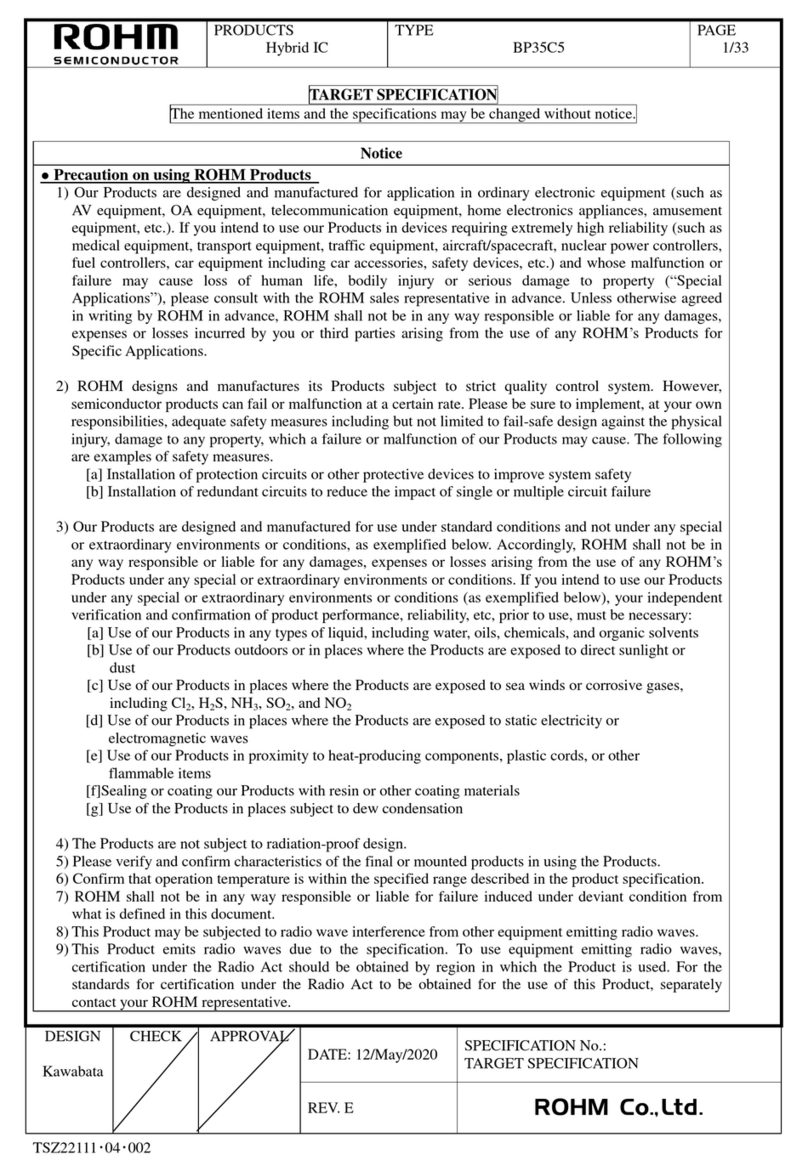
Rohm
Rohm BP35C5 User manual
Rohm
Rohm LAPIS Semiconductor ML22660 User manual
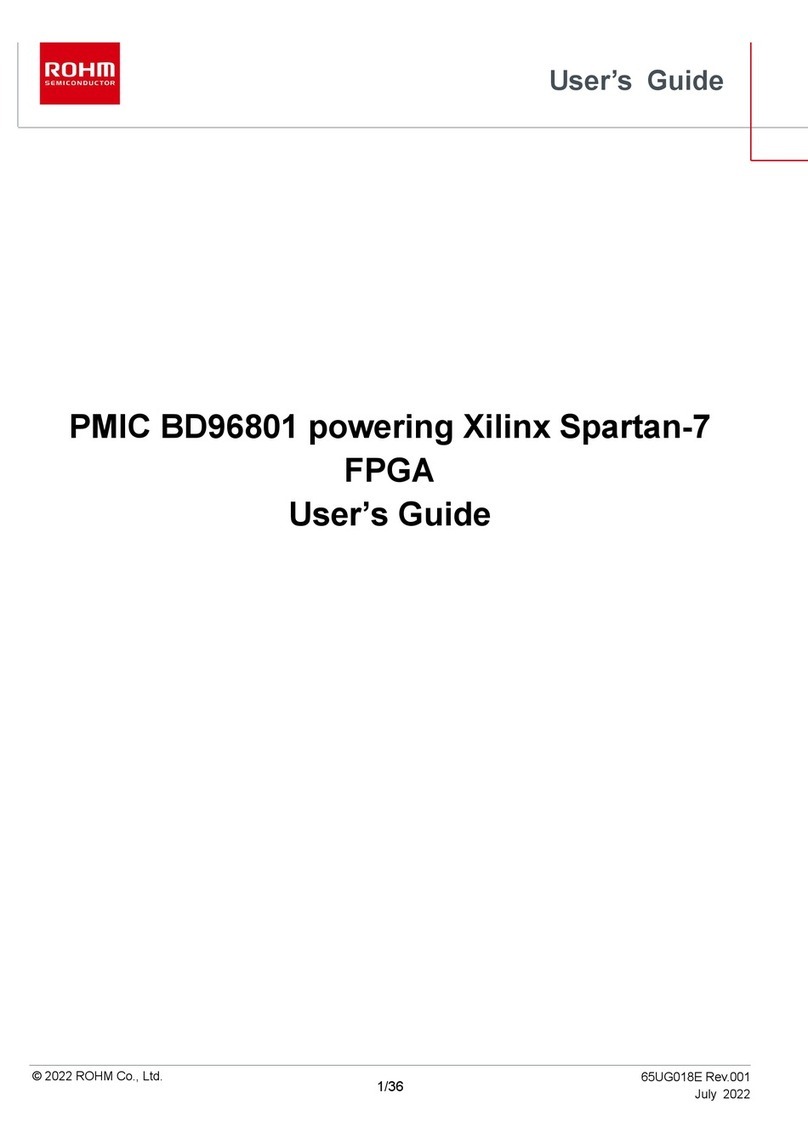
Rohm
Rohm PMIC BD96801 User manual
Rohm
Rohm LAPIS Semiconductor ML7404 Series Guide
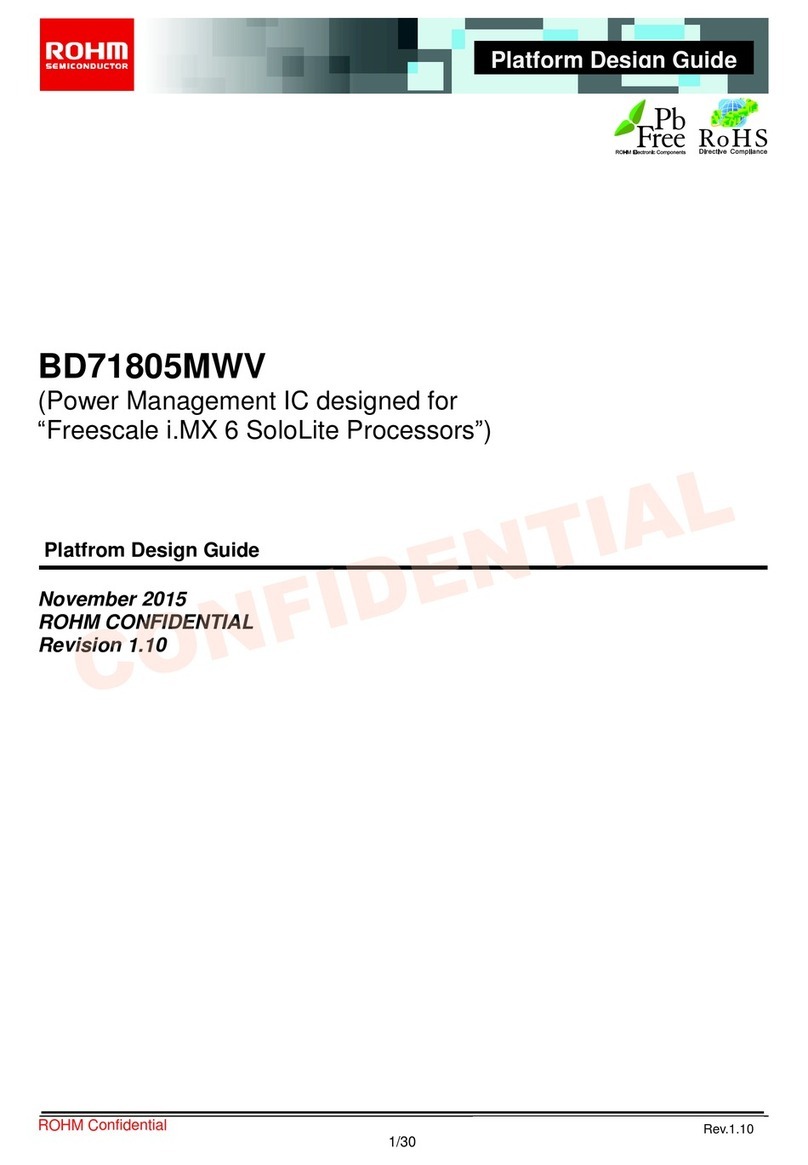
Rohm
Rohm BD71805MWV Guide
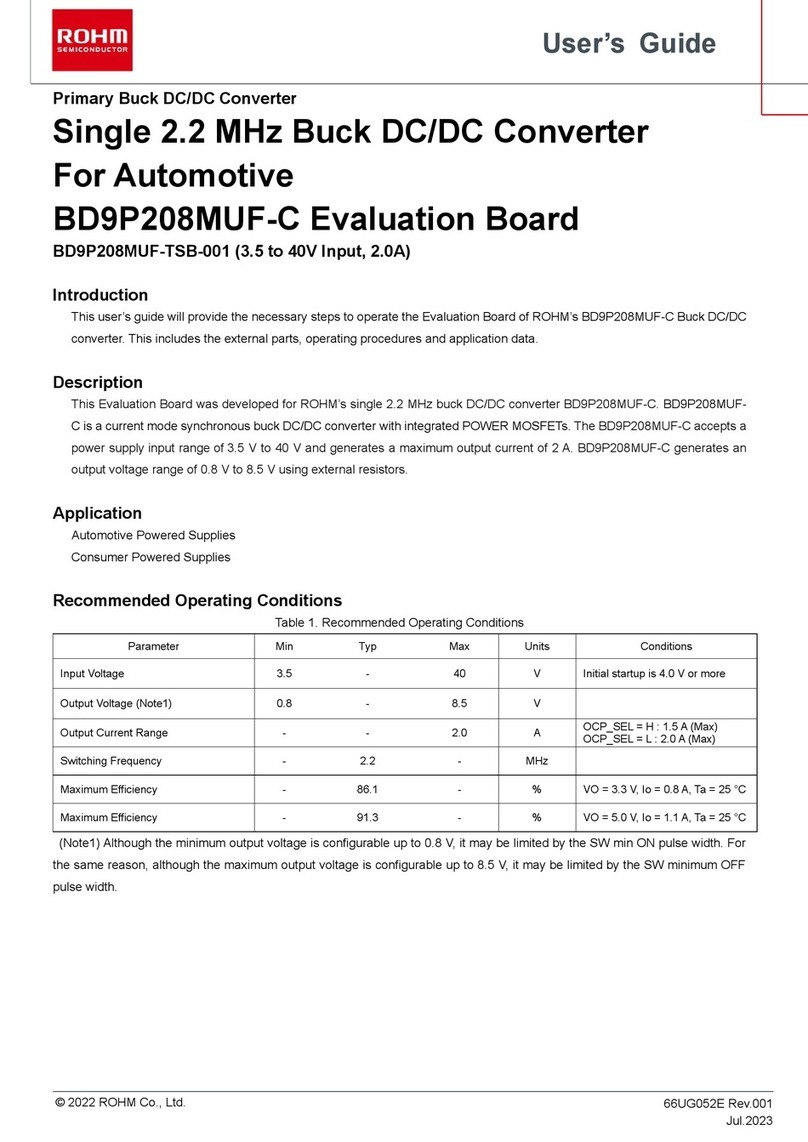
Rohm
Rohm BD9P208MUF-TSB-001 User manual

Rohm
Rohm BD9P108MUF-TSB-001 User manual
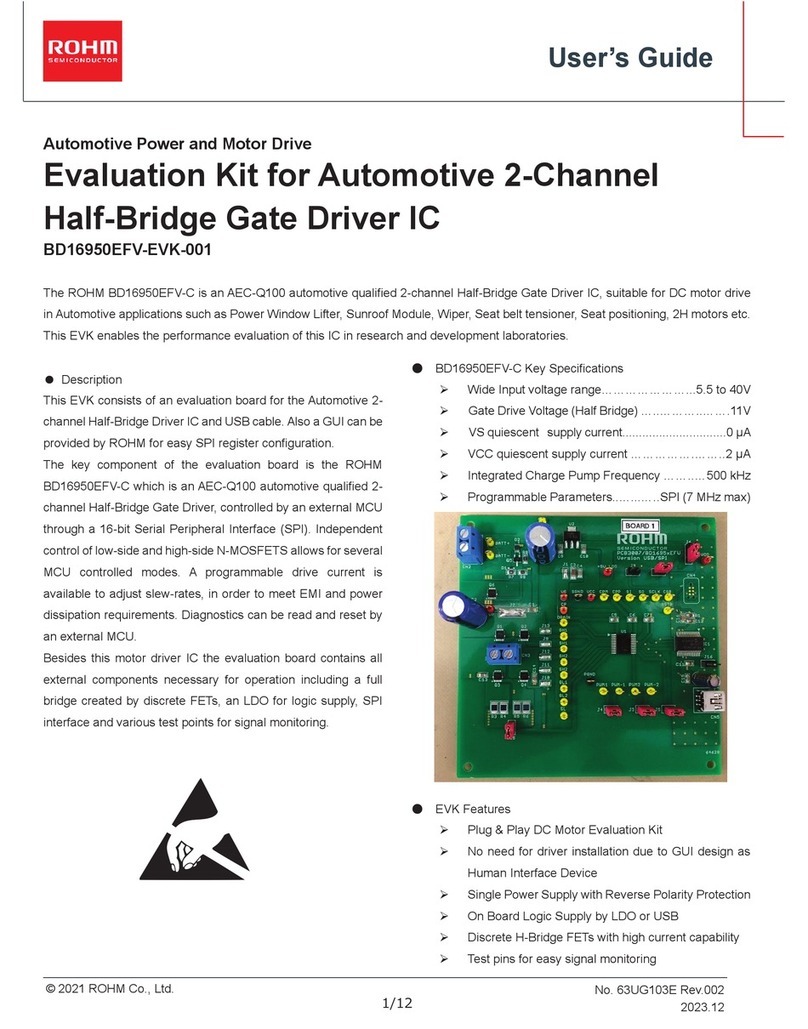
Rohm
Rohm BD16950EFV-EVK-001 User manual
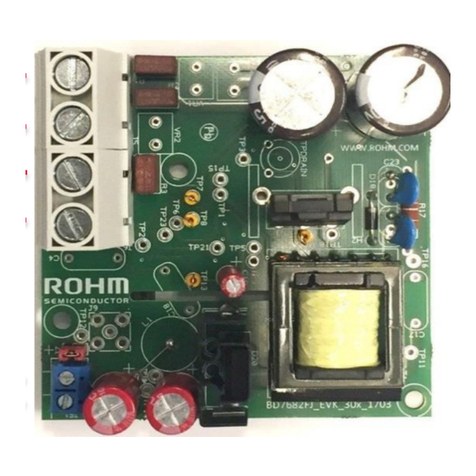
Rohm
Rohm BD7682FJ-EVK-301 User manual
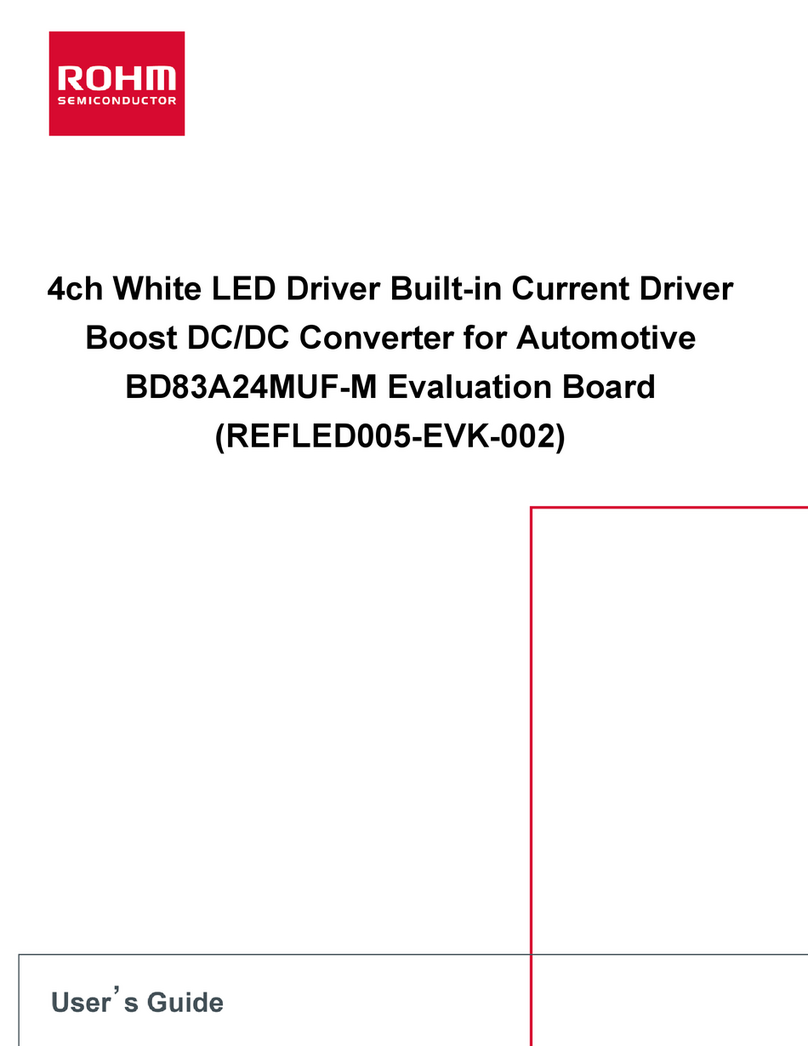
Rohm
Rohm REFLED005-EVK-002 User manual
